As luck would have it, many teams had given up or had realised they had surplus equipment, including food. Matt and Jim, two friendly American climbers, passed us some freeze-dried meals. By lunchtime, I was gleefully returning to our tent like Santa Claus.
“Wow – cider drinks, freeze-dried chicken, oats… more oats. Boy, we’ve got enough for days,” said Wilfred, his spirits lifted. Together with a couple of canisters of gas, we had fuel and food for two more days.
Up high we watched Keil with one client climbing up for the summit. Of all his clients, only one remained in good condition to make the summit push. It was a pretty bold move too, since none of them had spent more than one night acclimatising at the 5900m camp.
Wilfred watched them with some envy, going on about how this was a great summit day, and that we had missed a great chance to go for the top. I gently mentioned how we were pretty wasted ourselves from the day before, and would probably not make a good attempt.
My watch alarm went off with an annoying beeping cadence at about 4am the next day. Wilfred, cocooned in his down sleeping bag, didn’t stir. Outside in the darkness, winds slapped and whipped our tent.
“Oi! It’s pretty windy out there… what do you think?”
“Mnnffft? Aiya – go back to sleep for while, OK?”
I lay there, unable to sleep but closed my eyes and tried to maximise the time I had left to rest my body. At 5:30, I nudged Wilfred again.
“Hey, it’s still damn windy. Should we go?”
“I dunno, let’s wait a while longer, wind might slow down,” he trailed off.
At 6:30am, I was really awake. Dawn had broken and the sliver of light creeping up signalled the start of the day, the big day. The wind was still there, albeit less vicious.
“Hey Beng!” I called out loudly, using Wilfred’s Chinese name. “If we don’t get going now, we won’t ever go!”
Our tent became the scene of a terrific commotion as we hastily made a brew for breakfast and struggled to don our layers of clothing. It was a much colder day than the 16th, our first summit day. We both piled out of the tent into the first light, squinting at the bright rays of the awakening sun.
Finding some shelter, we both took a dump to get our bowels out of the way for the day. My zipper got stuck and there was a colourful round of swearing as I fiddled with straps, buckles and zippers. On television, serious mountaineering often looks dramatic and glamourous. In reality, it is hard work, squalid and you are sometimes reduced to a laughable caricature as you struggle to keep your bare buttocks from being scoured by a merciless wind; hopping about madly to get a zip to close. I collapsed back into the tent to warm up my frozen fingers. Since GBS, I found that my fingers, especially both my thumbs failed to work in the cold. This may have been both a neurological and muscular issue. My left hand was already pretty screwed up with many fingers only partially functioning. I could compensate at times, using my teeth as a third hand. But when faced with non-functioning thumbs, it was frustrating to do the simplest tasks like tying boot laces.
To my horror, we only got going at 8:30am, about three hours later than most parties who go for the summit. That day, we were one of the few groups making that climb from the Polish Glacier side. Wilfred trailed behind me a little. But he had a look that made me think he was very far away. Later he told me he was just conserving energy and keeping an eye on me, a harder task to do if he had been ahead of me.
We made very good time, overtaking a number of climbers. The traverse over the icefield was straightforward but I had to keep telling myself not to screw up here. Unroped, we were climbing without any form of protection. Our only connection was the occasional wave or nod of the head. Far away to my right, the sun was already up on Mercedario, a beautiful and distant snow-capped 6000m peak.
It was beginning to look like our acclimatisation and patience was paying dividends. We reached the Independencia Hut after four hours, climbing at a rate of about 150 verticalm an hour, which was encouraging. Above the hut, we climbed up and began a traverse to the summit pyramid block. The trail wound its way through much ice, and a finger-shaped rock provided vestiges of shelter. Below to my right, the Gran Accareo swept downwards hundreds of metres. This was a huge scree field with no cover whatsoever. Many climbers, caught in a blinding storm, have wandered into this featureless zone, and perished looking for the route back to their campsites. We struggled a bit, pulling the hoods of our jackets over our chilled skulls and pressed on into the infamous Canaleta.
The Caneleta or Gully is probably the best known mountaineering feature on Aconcagua. A broad, loose gully, it starts at around 6600m and ends below the 6962m summit. The 400m of dangerously loose rock and scree at a 40-degree angle have defeated many climbers choosing this route. Much care needs to be taken not to dislodge loose rocks that could cause a small rockslide to wipe out parties below.
I picked my way up, Wilfred doggedly following. There was no marked route up the gully. Sometimes I would take three steps up only to slide down four steps. It was heart breaking. Some advice I had earlier suggested keeping to the right wall of the gully. This was marginally easier. The only relief was that once in the Canaleta, we were sheltered from the winds raking the Gran Accareo, and the exposed slope below.
My diary recounts the climb:
“Hopes of an early summit are dashed. There is a feeling of exhaustion as no rhythm can be kept in the sliding, unstable scree. I slowly reel in some climbers ahead. Matt the American, begins to slowly come into view. I pass a guided American team at 3:30pm. At 6800m, they are turning around, having spent more than 11 hours from their last camp on the normal route. Neither guide wants to be benighted with so many struggling clients. Up high parties search for the short traverse across two small snowfields that will bring them to the North summit, the top of the mountain. A sense of desperation sets in as the summit gets no closer and much energy is used just zigzagging. 50m below me, Wilfred looks really tired. At 4:30 in the afternoon, he catches up. He beckons to me, motioning at his watch. I know it is late.”
“We’re so close,” I said, “Let’s push this one a bit.”
I realised this meant a descent through the night.
At 5pm, we reached the final traverse. I met a grinning Matt who was descending after climbing to the top alone. Jim didn’t make it out of his tent and was waiting down at the Polish Glacier camp.
“I’ll watch out for you guys when you get down,” he said.
I turned back to look at the top of the gully. To the south is the lower south summit. I caught a fleeting glimpse of the enormous 3000m south face of Aconcagua; falling dizzily into the clouds below. We were the last climbers of the day to go for the top. There were no others descending from above. An unexpected rock scramble had me panting slightly. Suddenly, and without warning, I pulled on a large rock to bring my eye level to a large and flat plateau. It was about 5:30pm. Barely a stone’s throw away was an aluminium cross, no higher than a small boy. It was festooned with all manner of stickers and a few small flags.
It was the summit.
I sat on a rock nearby for a moment as the dipping sun threw long shadows. The peaks below were very distant in the deepening glow and clouds came and went. I began sobbing like a blubbering child, overwhelmed by the pent-up emotion and stress of the past two weeks. My face felt wet and there was a salty taste on my lips. After a couple of minutes, I wandered to the far end of the summit plateau, easily the size of several basketball courts. At one end was the brass plaque dedicated to 80 or so names of climbers who did not make it home. I recovered my tracks. Wilfred began to crest the final rocks. He looked bushwhacked.
“Hey, the summit,” he said, breaking into a smile at last.
“Ya, the summit.”
We shook hands, a bit awkwardly, and shared some precious moments on the top of the Americas. My eyes had dried up and we took several summit pictures, including one with the large banner that the Society for the Physically Disabled gave to us. We took a bit of video footage as well and I mumbled something into the camera. I think both of us were a bit stunned that we had actually pulled it off. My hands were bare, for it was unusually warm on top, possibly owing to the heat being given off from the summit rocks that had baked for eons under the Andean sun.
I gathered a few shards of rock as souvenirs and made my way down, Wilfred following as I staggered unsteadily over the broken ground. The descent was both scary and fun. Long stretches of fist-sized scree allowed a sliding descent which, at top speed, usually ended with us on our butts. Occasional boulders trundling by added to the fear factor. We knew we had to make the rocky notch that marked the end of the Polish Traverse by nightfall. Reversing our route from this point would then be straightforward. But trying to find it in the dark would be difficult and dangerously slow.
At the Independencia Hut, I finished what little water I had left, gagging at the icy slush and spilling half of it on my jacket. The sun was fading fast and we pelted down as fast as we could, stopping occasionally to catch our breath. As the skies turned a deep blue, and the red glow of twilight’s gleaming disappeared, we found the notch. Wilfred, who had been carrying our one and only rucksack all day, produced from its depths our headtorches. But the batteries were dead by then, exsanguinated by the sub-zero temperatures. Then the sky became lighter once more as a rising moon cast an anaemic, wan light onto us. I had experienced this phenomenon only once before in the Himalaya. It was in India in 1995. The darkness of night that came with the sun’s passing was only momentary, as a full moon threw light onto us almost immediately after the sun went down.
Tossing the useless torch back into the pack, we descended, slowly picking our way down the icefield. Far below, I thought I saw lights of a small campsite. After an hour I realised that they were not lights, but rather the reflection of dazzling bits of reflective fabric built into several tents to give them extra visibility.
With the camp less than 1km away, Wilfred suddenly left the trail and began to take a short cut across a pitch black scree field. I yelled at him but with no reply, I followed him down. He had picked up some speed and was soon swallowed by the darkness. I stumbled twice, falling heavily. By the time I gathered myself, there was no sign of him. Alone and in the dark, I began to make my way back to the glacier we had crossed in the morning. Apart from a few broken slots and trenches, the glacier did not have any man-eating crevasses. A bit disoriented, I began to look around for our tent. I stumbled once and looked rather stupidly at my crampons, still attached to my boots. Somehow, my stubby steel crampons gave extra purchase on a lot of the scrabbly stuff. But now, it was time to take the damn things off. But that could wait. I had to find the tent. Everyone else in the campsite had gone to sleep and darkness reigned. Finally, a small wedge-shaped tent appeared. I approached it slowly. It was the yellow and blue Macpac.
At his speed, Wilfred should have reached it way ahead of me. Yet there was no sign of life or the comforting quiet roar of a stove going. I unzipped the tent and fell into the jumbled mess of sleeping bags and equipment. It took five minutes to find a spare headtorch that worked. I flicked it on. The bulb glowed yellow for a moment and then died. I scrabbled around in the darkness, looking for some spare batteries. Once loaded, I lay there, my mind spinning and my breath a little ragged. It was 10:30pm and I had been on the go for nearly 15 hours with just a litre of water and a couple of cereal bars to drink and eat. I was badly dehydrated and running on empty. The woozy feeling took a while to dissipate. I had to find Wilfred.
Bursting out of the tent, I began to comb the area immediately around the campsite; beginning with the route we took to join the main summit route. Some clouds had come in and none of the moonlight that had been such a help earlier was there to make things easier. I looked and looked. From a distance, a shape that seemed to move could be Wilfred. I yelled his name several times. It was just a rock. My mind was playing tricks on me. I kept at this for twenty minutes or more. I made it back to my tent and emerged again, this time armed with the emergency strobe light.
Twenty more minutes, I thought, then I’ll start waking people to form a search party.
I began to comb an area northeast of the campsite, shouting Wilfred’s name; swearing every now and then. Suddenly, from some distance below me, I heard a shout. I squinted into the darkness and made out another shape. This time it was really moving. There was the steady clink of metal and crunching of gravel. It was not the sound made by a desperate person or one struggling to survive. The steady noise came closer. I shone my headtorch and looked into a very tired face.
“Where the hell have you been? I’ve been worried sick – about to call out the others to look for you.”
“Ya, I overshot the campsite in the dark, went all the way down and then realised I had missed it. Been spending all this time zig-zagging up to look for the camp. Damn tired, boy, what a day.”
“For God’s sake, don’t ever do that again; splitting up without discussing it first. Jeez, I hope never to have to look for you like this again,” I said, delighted he was safe and yet annoyed to have been given such a scare.
We plodded back to our tent and got cleaned up by midnight. Wilfred had to have some soup so we got the stove going. I do not remember what we ate, not much probably and I soon fell asleep in between the brews. The elation of the previous hour had changed and the slight scare I had from the search had taken some gloss off the quiet happiness of having succeeded. But all was well, and I dozed solidly until morning.
We slept through the dawn and awoke to bright sunshine the next day. I got out of my down bag and unzipped the tent. The nylon fabric was fast warming to the sun. In the vestibule were about four or five clear plastic bags of food. From the packaging, the manna must have been deposited by Jim and Matt who had chosen not to wake us before departing themselves. I was so dehydrated I didn’t have a pee for almost a day and what did come out was like brandy – only darker and sharp to the nose.
As we slowly pottered around packing for the descent, another climber came up and offered to trade a pack of ready-to-eat king salmon for half a roll of toilet paper. Alas, we were short ourselves, and could not find the extra paper. It would have been a fantastic trade.
Staggering under loads in excess of 20kg, we retraced our path, waving goodbye to our new friends and wishing them luck. I took another butt-slide on the hardpacked slopes below the camp and Wilfred’s swift action in grabbing my pack prevented me from hurtling down any further. Later I gave quiet thanks that that would be the last of the tricky sections.
At our ABC, we packed up the burnt tent and shouldered our loads slowly down the rest of the route. The trail went on and on, each cairn representing a marker we would not pass again. Far below, coloured specks began to appear. It was ‘Plaza Argentina’, our base camp. We got in just as the light began to go at 9pm and settled in to a large dinner with just about all the food we had left.
John and Clarke, the two professors who had helped us after the tent fire, came in very late themselves the next day. They hadn’t been successful in reaching the top. We took a look at them and thought our last eggs would benefit them more, so our eggs welcomed them for breakfast on the 22nd.
At noon, we left ‘Plaza Argentina’. We had had a long wait to make sure the mule carrying our heavier equipment was rigged properly. Bombing down, I realised that we had a very long walk to Las Lenas, the campsite on our very first night on the inward trek. Reversing two days’ walking in a single day meant we would likely only make Las Lenas after dark. The first problem we encountered was the junction of the Relinchos and Vacas rivers. We reached this point at 3pm, with the river in full flood. Doffing our boots, and in bare feet, we linked arms and slowly crossed. I gasped as the icy cold grey waters rushed past, at times up to my mid-thigh level. My emaciated and crippled ankle struggled to play a useful part. The foot itself was also atrophied with no muscle tissue to cushion the bones from the rocks below. With a ski-pole each, we hobbled across like a six-legged creature.
“It’s like extreme reflexology,” I exclaimed after we had finished the crossing.
The rest of the merciless afternoon was spent traversing one grassy hummock after another. I quickened my pace from 8pm when the light began to go. By 9:30pm, it was completely dark and I began to trace my path by looking out for fresh mule droppings. Every now and then the path fanned out into several smaller paths – presenting difficult choices. I kept yelling for Wilfred who was well ahead of me. I could no longer see his headtorch but I was sure he was planning ahead.
As I dropped down towards the river, my heart sank. We would have to cross the Vacas one more time and the river was thundering away. The fast flow created many whitecaps and these glinted malevolently as I got closer. Finally, on a sandy shore, I found Wilfred. He had been yelling to the ranger station across from the river. Some gauchos eventually saddled up and came to the river’s edge. One was leading a mule. As he crossed, the ranger shouted at us to switch off our headtorches so as to not spook the mules. In the darkness, I could see the rushing waters were nearly as high as the bellies of the mules.
I thought, if one of those mules loses its balance with me on it, we’re both goners.
Wilfred went first, getting astride the rider-less mule. When my turn came, the crossing must have lasted no more than a minute. But it seemed like eternity. Splashes of water soaked my boots and legs, and then we were across.
We tried to make a meal after we settled down, but it turned out awful. Huddling around a fire, one of the rough-looking gauchos came over and, with unmistakable hospitality, thrust two roughly hewn sandwiches towards us. Inside the fresh bread were two chunks of chorizo, grilled over their fire. Lightly seasoned with salt, the crispy outer was matched with a tender, well-done inner. We scoffed these, swearing that they were the best sandwiches we had ever tasted. I still haven’t found any better.
A day later we were in Los Penitentes and found lodging in a cheap hostel. My first shower in 17 days was a marvel. The water gurgling down the sinkhole was a murky grey Color but the feeling of getting clean again was indescribable.Daydreaming of the enormous buffet eateries, cold beers and warm sheets, we caught a ride into Mendoza the next day. It rained all the way back.
FOR MORE INFORMATION ON DAVID”S BOOK “AGAINST GIANTS”
GO BACK TO ARCHIVED EXPEDITIONS OF DAVID LIM AND FRIENDS.
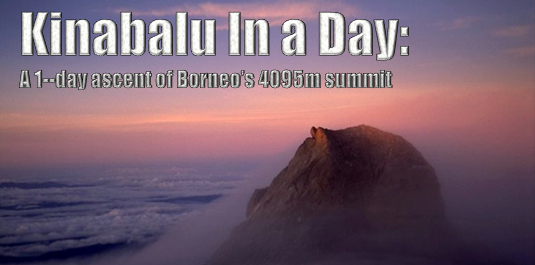
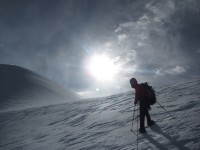
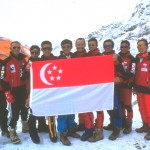
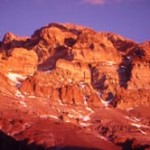
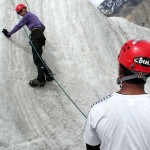
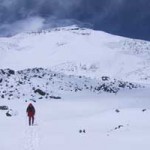
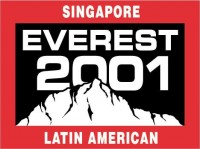
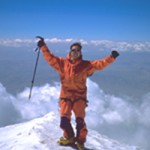
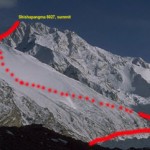

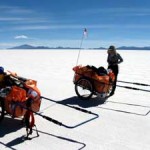

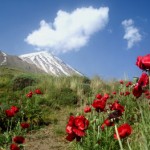
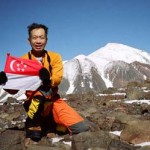
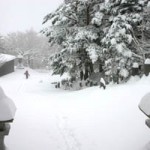
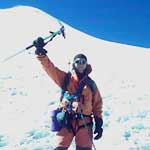
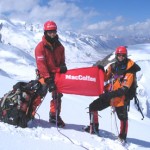
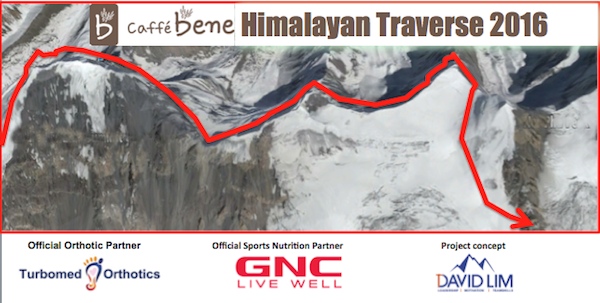
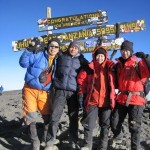

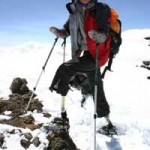
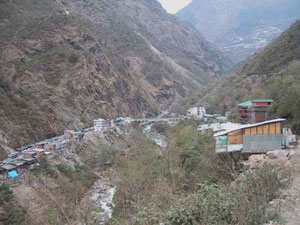 The Kodali Gorge marks the border between Nepal and China (Tibet). Nepal is on the left, the Friendship Bridge in the middle, and to the right and top of the picture is Tibet. Zhangmu is the village on the hillside on the upper right hand.
The Kodali Gorge marks the border between Nepal and China (Tibet). Nepal is on the left, the Friendship Bridge in the middle, and to the right and top of the picture is Tibet. Zhangmu is the village on the hillside on the upper right hand.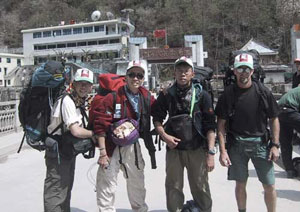
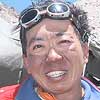 David Lim, Leader
David Lim, Leader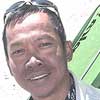 Mohd Rozani bin Maarof
Mohd Rozani bin Maarof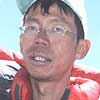
 Wong Ting Sern, Base Camp Support & Technical Officer
Wong Ting Sern, Base Camp Support & Technical Officer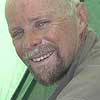 Gil Francisco Piekarz
Gil Francisco Piekarz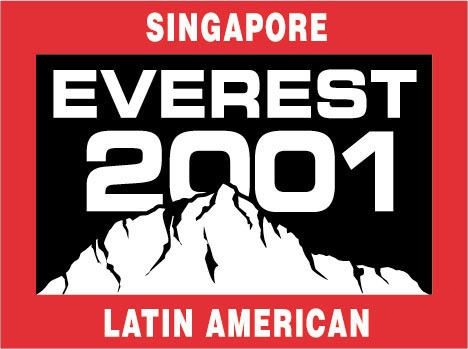

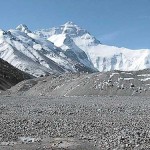
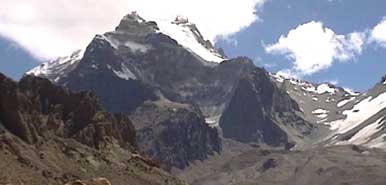
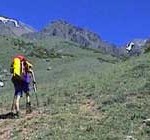



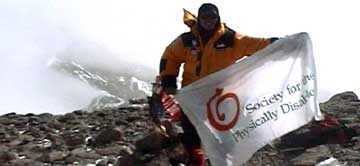
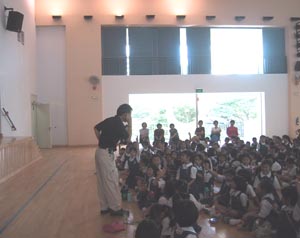
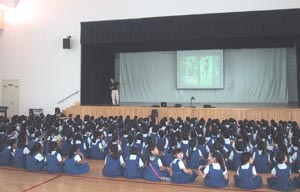
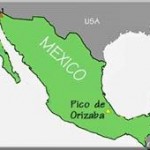
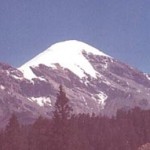

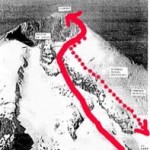
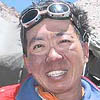 David Lim, 38:
David Lim, 38: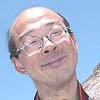 Wong Ting Sern, 44
Wong Ting Sern, 44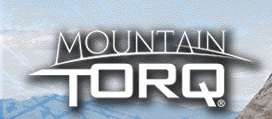 Established by long time mountaineer, friend and expedition partner Wilfred Tok, Mountain Torq provides a unique mountaineering thrill and challenge. Consider it mountaineering for non-mountaineers. Mountain Torq is a string of routes comprising steel rungs, footplates and cables strung alongside steep cliffs and slopes of Mt Kinabalu. This is a via ferrata (or iron road) first created in the Italian Alps nearly 100 years ago. Since then, these methods of climbing up and traversing mountains have spread throughout Europe. MountainTorq is not only set in Mt Kinabalu,a UNESCO heritage site, but is also the world’s highest via ferrata.
Established by long time mountaineer, friend and expedition partner Wilfred Tok, Mountain Torq provides a unique mountaineering thrill and challenge. Consider it mountaineering for non-mountaineers. Mountain Torq is a string of routes comprising steel rungs, footplates and cables strung alongside steep cliffs and slopes of Mt Kinabalu. This is a via ferrata (or iron road) first created in the Italian Alps nearly 100 years ago. Since then, these methods of climbing up and traversing mountains have spread throughout Europe. MountainTorq is not only set in Mt Kinabalu,a UNESCO heritage site, but is also the world’s highest via ferrata. 